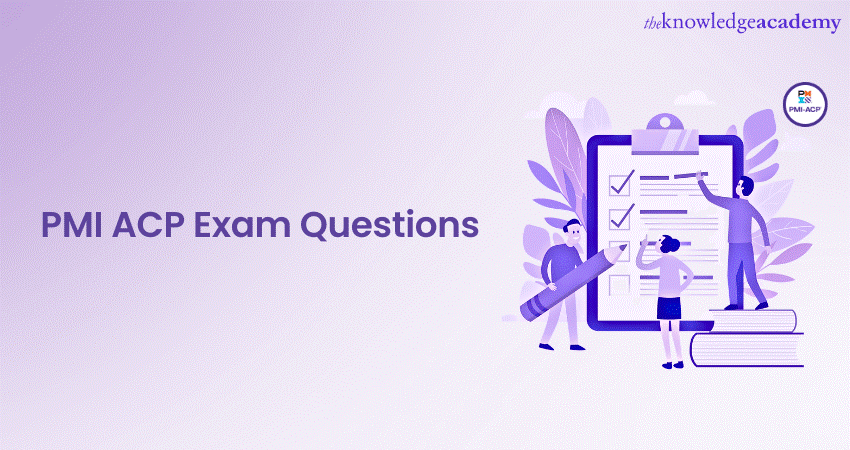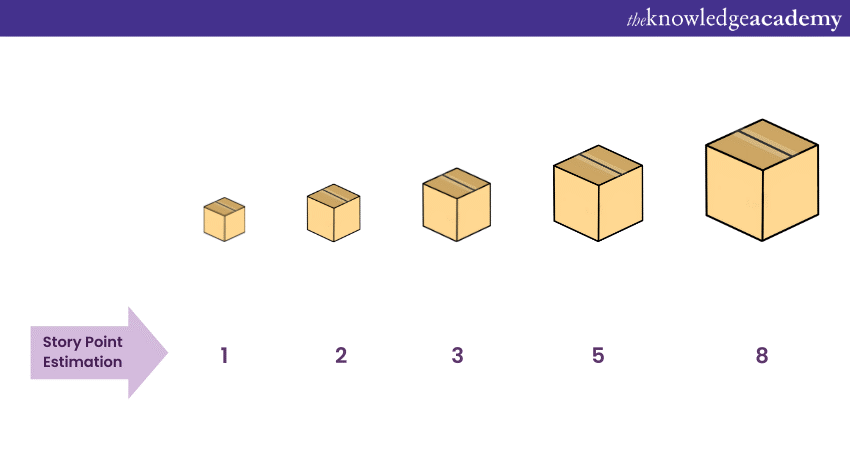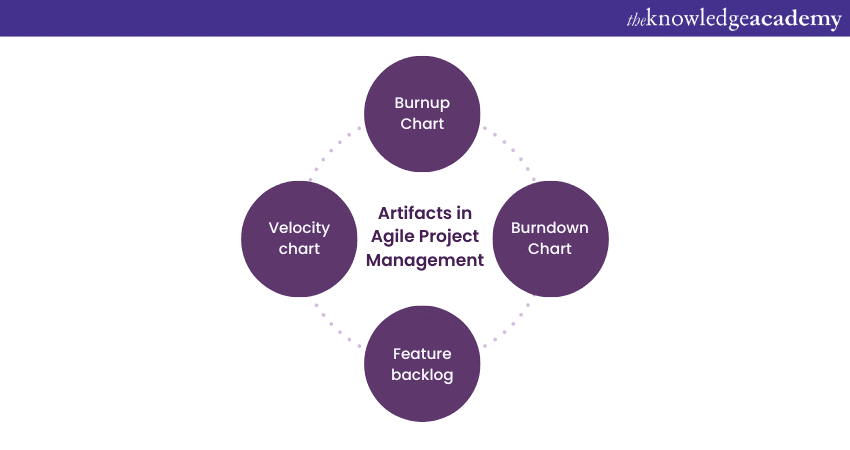We may not have the course you’re looking for. If you enquire or give us a call on 01344203999 and speak to our training experts, we may still be able to help with your training requirements.
We ensure quality, budget-alignment, and timely delivery by our expert instructors.

Are you a prospective Agile Practitioner planning to take the PMI-ACP exam? If yes, then consider practising the PMI ACP Exam Questions beforehand. Practising to answer these questions can help you pass the exam with flying colours.
As per Project Management Institute (PMI), the candidates are required to pass a 120-question, multiple-choice exam. But, without good preparation, familiarity with the exam pattern and understanding of the examiners’ expectations, it becomes almost impossible to crack the exam.
But you can make this impossible task possible with the right preparation and guidance. Check out the essential PMI-ACP exam questions and answers discussed in this blog to start your preparation today.
Table of Contents
1) Top PMI ACP sample question
a) The definition of Done clarified that a set of items is to be completed to go into production. At what stage do the teams use this definition first?
b) What is the core focus of Kanban practices?
c) What responsibilities make a Scrum Master the true Servant Leader of the Agile Team?
d) The following practices are used in Lean except?
e) What should a Scrum Master do when a Product Owner wants to attend the daily stand-up meetings?
f) At times, the Developers and testers in the team might have differing views on the completion of the stories. How can this issue be resolved?
g) A team estimates the time needed to develop a software package by posting User Stories on the wall from small to expansive. Which technique has been used here?
h) There are six stories in an iteration, with the following story points: Story 1 – 4, Story 2 – 2, Story 3 – 2, Story 4 – 1, Story 5 – 3, Story 6 – 4. If the iteration’s velocity is 7, which stories can be included in the iteration?
i) Your Scrum team currently has 16 members, which has caused a crowd in the daily Scrum and is running long. What would be the best way to deal with this situation as a Scrum Master?
j) Your team goes to the daily 15-minute stand-up meeting. But today, the Product Owner has assigned tasks to team members in the meeting. How should this be addressed?
2) Conclusion
Top PMI ACP sample questions
Following are the top PMI ACP practice questions that can be helpful for the candidates preparing for the PMI ACP exam:
1) The definition of ‘done’ clarifies that a set of items that have been completed can go into production. At what stage do the teams use this definition first?
a) By the tester, while checking the stories
b) While marking a work item as complete
c) While estimating the work
d) During the Sprint to determine the tasks that need to be done
The answer is option C.
While estimating the work, the team should know what needs to be done so that they can assign the responsibilities duly.

2) Modern organisations are adopting the Agile approach quickly because of their flexibility to adapt to change. This adoption is important because?
a) Teams need to prepare themselves to handle change to enhance their technical know-how
b) Excessive change inhibits planning to a great extent
c) Changes can bring a competitive advantage to the customer
d) Minimising the range of change is crucial for success
The answer is option C.
Changing requirements bring about a competitive advantage to the customer.
3) What is the core focus of Kanban practices?
a) Limit WIP, make process policies explicit, measure and manage flow
b) Define and visualise the workflow, self-organising, measure and manage flow
c) Limit WIP, use models to suggest an improvement, prioritise business value
d) Define and visualise the workflow, make process policies explicit, and Simplicity
The answer is option A.
The core focus of Kanban practices is to optimise workflow, reduce waste, and promote a culture of continuous improvement to enhance the team’s productivity and deliver value more effectively.
4) What responsibilities make a Scrum Master the true Servant Leader of the Agile Team?
a) Management of the projects
b) Keeping the team focused on Agile principles
c) Maintaining communication with executives
d) Technical leadership
The answer is option B.
The Scrum Master is responsible for helping the team follow the Scrum process by developing an Agile mindset.
5) The following practices are used in Lean except:
a) Just-in-time (JIT) production and waste reduction
b) Continuous improvement
c) Push system
d) Value stream mapping
e) The answer is option C.
Lean uses Pull instead of a Push system. It ensures the work is done in the value stream when demanded instead of pushing work based on assumptions or arbitrary schedules.
6) What should a Scrum Master do when a Product Owner wants to attend the daily stand-up meetings?
a) Invite the Product Owner to attend the meeting but as a silent observer
b) Let the team vote and decide
c) Invite the Product Owner as an active participant in the meeting
d) Invite the Product Owner to the retrospective instead
The answer is option A.
The daily stand-up meetings are brief meetings for the entire Agile Team, where Stakeholders, such as the Product Owner, need not actively participate.
7) While applying Test Driven Development writing tests, it fails. Now the development team makes changes for the tests to pass. Here, the code needs to be cleaned up. This practice is known as:
a) Retesting
b) Refactoring
c) Researching
d) Reviewing
The answer is option B.
Refactoring is the practice of enhancing the design, structure, and readability of existing code without changing its functionality. It ensures that the code remains clean, efficient, and easier to work with while maintaining the software’s behaviour.
8) The Test-driven Development process involves the following steps:
a) Code, Refactor, Test, Deliver
b) Test, Code, Deliver, Refractor
c) Code, Test, Refactor, Deliver
d) Test, Code, Refactor, Deliver
The answer is option D.
The steps included in a Test-driven Development process are test, code, refactor, and deliver. By following these steps, Test-Driven Development (TDD) encourages positive development with a strong focus on test coverage and code quality.
9) At times, the developers and testers in the team might have differing views on the completion of the stories. How can this issue be resolved?
a) Redefine the stories after each iteration
b) Approach the customer
c) No changes to the stories, as the team agreed on the definition at the beginning
d) Redefine ground rules
The answer is option C.
The definition of ‘done’ must be clearly defined and agreed upon by the entire team. It cannot be changed once the User Story is complete.
10) A team estimates the time needed to develop a software package by posting User Stories on the wall from small to expansive. Which technique has been used here?
a) Top-down estimating
b) Wireframes
c) Relative sizing
d) Game player
The answer is option C.
Relative sizing is a technique used to estimate the size and complexity of a function or user story in relation to the other.

11) Steph is working on “Project Nightlight”, which aims for software migration at a bank. While performing Risk Management activities, a major risk identified is causing the exploitation of resources. As a response, Steph, with the help of senior management, provides good increments to his team members. What type of risk response is Steph following?
a) Avoid
b) Mitigate
c) Accept
d) Transfer
The answer is option B.
Steph is using the ‘Mitigation’ risk response strategy to reduce the possibility and/or impact of a risk event when it occurs.
12) There are six stories in an iteration, with the following story points: Story 1 – 4, Story 2 – 2, Story 3 – 2, Story 4 – 1, Story 5 – 3, Story 6 – 4. If the iteration’s velocity is 7, which stories can be included in the iteration?
a) Stories – 1, 5 and 3
b) Stories – 4, 2 and 6
c) Stories – 1, 2, and 4
d) Stories – 3, 4 and 1
The answer is option C.
The sum of story points of stories 1 and 4 equals 7, which matches the given velocity.
Take your Project Management skills to the next level. Register for our PMP® Training now!
13) Your Scrum team currently has 16 members, which has caused a crowd in the daily Scrum and is running long. What would be the best way to deal with this situation as a Scrum Master?
a) Timebox the Scrum
b) Synchronise the work
c) Split the group into two smaller Scrums, then coordinate with a Scrum of Scrums
d) All the above
The answer is option D.
All the explanations are true, as they can help improve focus, efficiency, coordination, and engagement during the daily Scrum.
14) Which of the following is NOT an Agile value?
a) Working software over comprehensive documentation
b) Customer collaboration over contract negotiation
c) Individuals and interactions over processes and tools
d) Following a Plan over quality check
The answer is option D.
It states the wrong Agile value. The answer should be “Responding to change over following a plan.”
15) You are the Scrum Master for a new project and are working with the Product Owner. Your team has selected User Stories for the first Sprint. However, the Product Owner is unsatisfied with the team’s target and wants to deliver more. The team is uncomfortable committing more as they haven't understood the stories well. What is your role here?
a) Ask the Product Owner to review the stories and add more details and acceptance criteria to help the team better determine if they can deliver more stories.
b) Shift one of the stories for the next Sprint and add more details to the stories.
c) Encourage the team to add extra stories for the Sprint and expand the goal.
d) Explain to the Product Owner that the team is determinant, and Product Owner needs to accept what they have identified.
The answer is option A.
Ask the Product Owner to review the stories and add more details and acceptance criteria to help the team better determine if they can deliver more stories. It provides better clarity and understanding of the User Stories. Also, it allows the team to test their capabilities and deliver more accurately.
16) Your team goes to the daily 15-minute stand-up meeting. But today, the Product Owner has assigned tasks to team members in the same meeting. How should this be addressed?
a) Ask the Product Owner not to intervene during the standups and not assign tasks to the team
b) Instead of the Product Owner, the Scrum Master should assign tasks to keep the standups short
c) Extend the meeting duration to 30 minutes
d) Assign the tasks after the standup meeting
The answer is option A.
The Product Owner should not ideally be a part of the daily standups. Tasks are self-assigned by the team.
17) What are burndown, burnup, feature backlogs, and velocity charts?
a) Organisational process assets
b) Agile status
c) Information radiators
d) Enterprise Environmental factors
The answer is option C - Information radiators.

18) The delivery of the increment should satisfy the customer and must be the highest priority of the Agile Team. Which of the following Agile principles is being addressed here?
a) Customer satisfaction through early and continuous delivery of valuable software.
b) Continuous attention to technical excellence and good design enhances agility.
c) Deliver working software frequently, with a preference for shorter timescales.
d) Welcome changing requirements, even in late development. Agile processes encourage change for the customer's competitive advantage.
The answer is option A.
Customer satisfaction through early and continuous delivery of valuable software.
19) If the velocity of the Scrum Team consistently fails, what does it indicate?
a) Self-dependency of the team
b) Overcommitment
c) Attrition of skills and resources
d) Technical excellence and high-quality deliverables
The answer is option B.
O Overcommitment, i.e., the team is committing to extra work they cannot realistically handle.
20) Your team has 300 points in the backlog and a velocity of 20 points for each two-week iteration. How many iterations are required to complete the backlog?
a) 10 iterations
b) 15 iterations
c) 20 iterations
d) 25 iterations
The answer is option B.
Number of iterations = 300 points / 20 points per iteration
Number of iterations = 15 iterations
Conclusion
We hope the PMI ACP Exam Questions provided in the blog have helped you understand the pattern of questions asked in the PMI-ACP Certification exam. So, get your preparation on, and pass the exam with the highest grade.
Learn about Agile fundamentals and their applications in real-time projects with our PMI-ACP® Certification Training.
Frequently Asked Questions
Upcoming Project Management Resources Batches & Dates
Date
 PMP® Certification Training Course
PMP® Certification Training Course
Mon 24th Feb 2025
Mon 3rd Mar 2025
Sat 8th Mar 2025, Sun 9th Mar 2025
Mon 10th Mar 2025
Mon 17th Mar 2025
Sat 22nd Mar 2025, Sun 23rd Mar 2025
Mon 24th Mar 2025
Mon 31st Mar 2025
Sat 5th Apr 2025, Sun 6th Apr 2025
Mon 7th Apr 2025
Mon 14th Apr 2025
Sat 19th Apr 2025, Sun 20th Apr 2025
Tue 22nd Apr 2025
Mon 28th Apr 2025
Sat 3rd May 2025, Sun 4th May 2025
Tue 6th May 2025
Mon 12th May 2025
Sat 17th May 2025, Sun 18th May 2025
Mon 19th May 2025
Tue 27th May 2025
Mon 2nd Jun 2025
Sat 7th Jun 2025, Sun 8th Jun 2025
Mon 9th Jun 2025
Mon 16th Jun 2025
Sat 21st Jun 2025, Sun 22nd Jun 2025
Mon 23rd Jun 2025
Mon 30th Jun 2025
Sat 5th Jul 2025, Sun 6th Jul 2025
Mon 7th Jul 2025
Mon 14th Jul 2025
Sat 19th Jul 2025, Sun 20th Jul 2025
Mon 21st Jul 2025
Mon 28th Jul 2025
Sat 2nd Aug 2025, Sun 3rd Aug 2025
Mon 4th Aug 2025
Mon 11th Aug 2025
Sat 16th Aug 2025, Sun 17th Aug 2025
Mon 18th Aug 2025
Tue 26th Aug 2025
Mon 1st Sep 2025
Sat 6th Sep 2025, Sun 7th Sep 2025
Mon 8th Sep 2025
Mon 15th Sep 2025
Sat 20th Sep 2025, Sun 21st Sep 2025
Mon 22nd Sep 2025
Mon 29th Sep 2025
Sat 4th Oct 2025, Sun 5th Oct 2025
Mon 6th Oct 2025
Mon 13th Oct 2025
Sat 18th Oct 2025, Sun 19th Oct 2025
Mon 20th Oct 2025
Mon 27th Oct 2025
Mon 3rd Nov 2025
Sat 8th Nov 2025, Sun 9th Nov 2025
Mon 10th Nov 2025
Mon 17th Nov 2025
Sat 22nd Nov 2025, Sun 23rd Nov 2025
Mon 24th Nov 2025
Mon 1st Dec 2025
Sat 6th Dec 2025, Sun 7th Dec 2025
Mon 8th Dec 2025
Mon 15th Dec 2025
Sat 20th Dec 2025, Sun 21st Dec 2025






 Top Rated Course
Top Rated Course


 If you wish to make any changes to your course, please
If you wish to make any changes to your course, please


